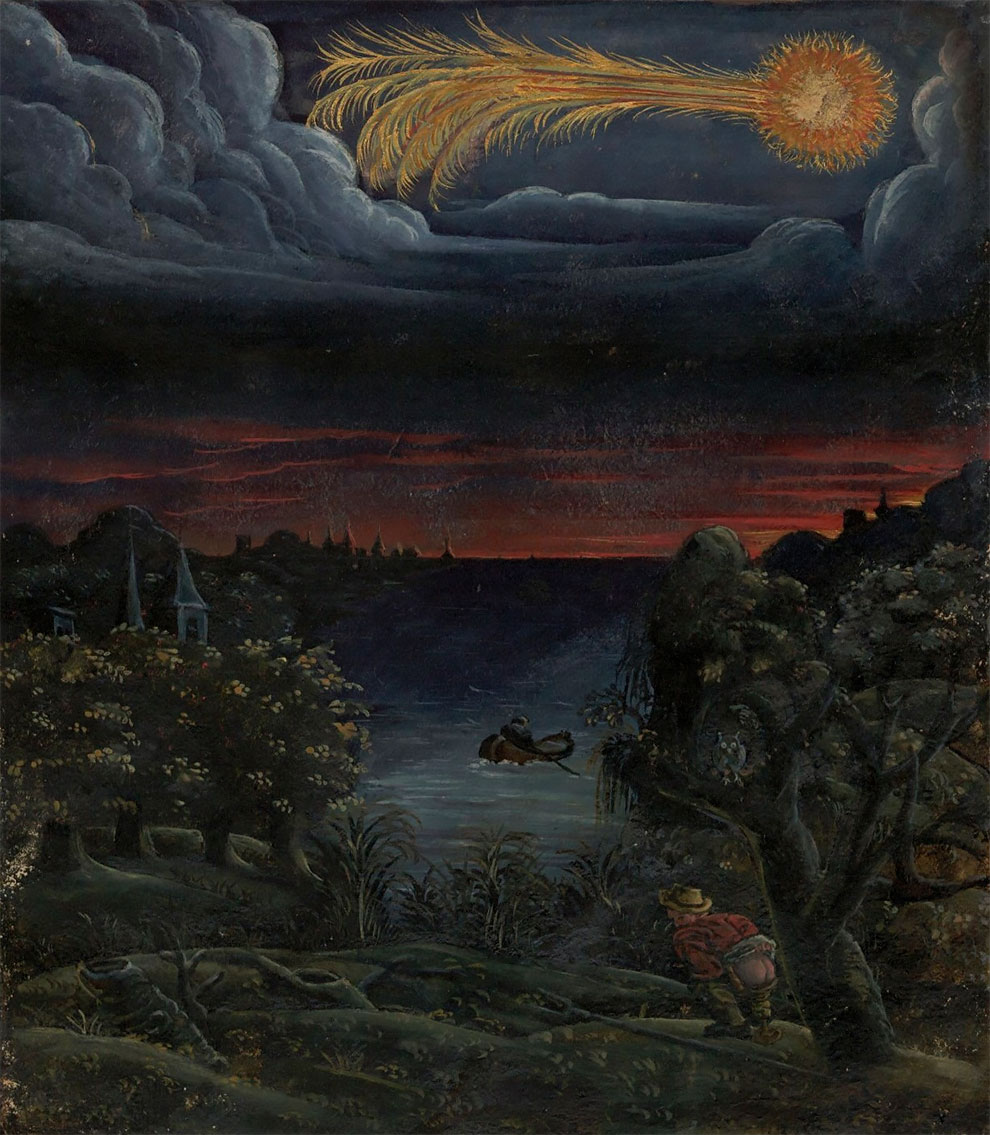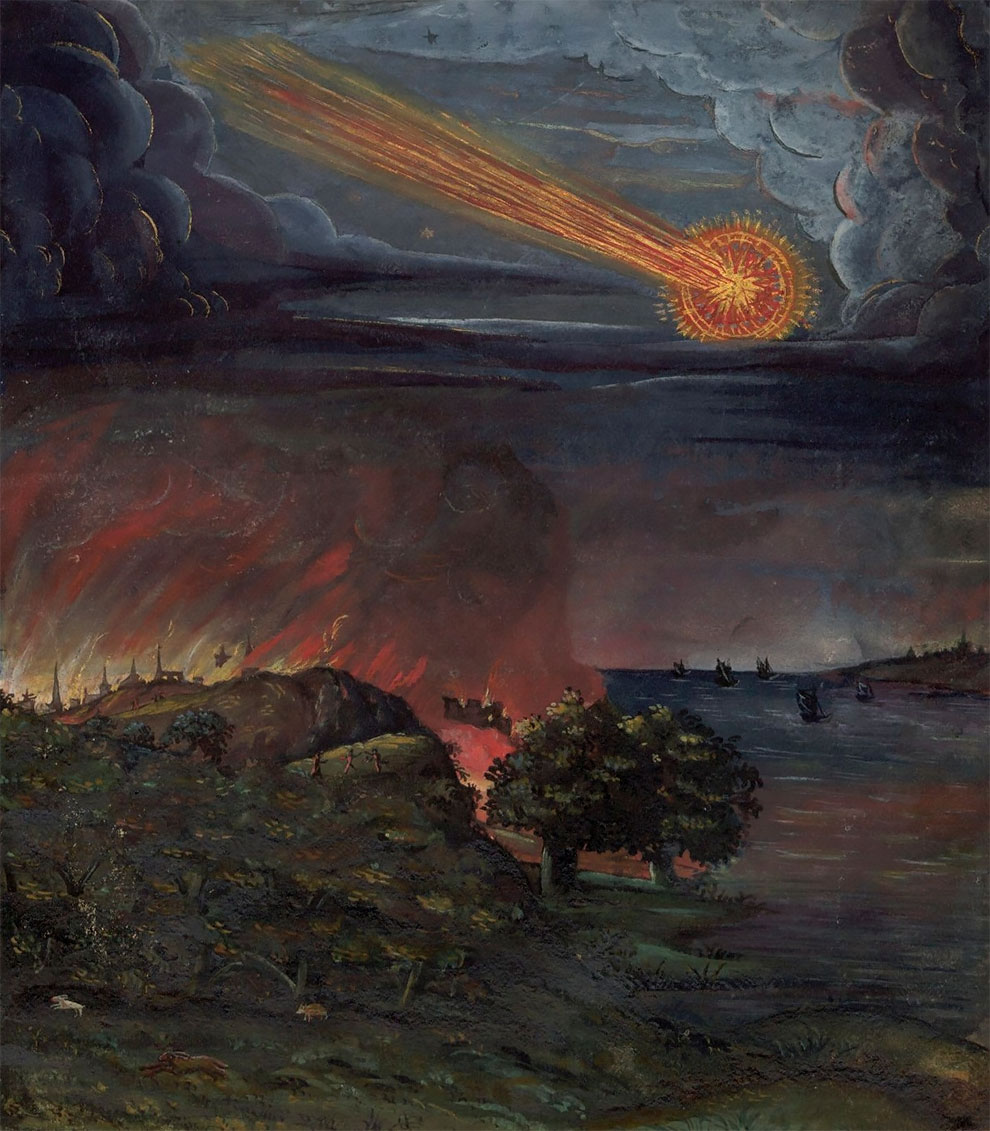These Beautiful 16th Century Watercolors Illustrate the History of Comets And Meteors

Humans have long regarded comets with a swirling mix of wonder and fear: The cosmic characters figure on Babylonian tablets and a sprawling, 11th-century European tapestry. Before scientists knew exactly what caused these bright smears across the sky, comets were often interpreted as portents of doom or destruction. (Occasionally, they were blamed for less-dramatic shenanigans, such as inspiring chickens to lay oddly shaped eggs.) Given their rich history, it makes sense that an unknown artist in 16th-century Flanders compiled a lavishly illustrated compendium of comets blazing as humans cowered or gawked.
h/t: atlasobscura, brainpickings

‘Kometenbuch’, the French-language manuscript, which now resides at the Universitätsbibliothek Kassel in Germany, is colloquially known as ‘The Comet Book’. As the Public Domain Review points out, the book is preoccupied with symbolism and significance over science; its full title translates to ‘Comets and Their General and Particular Meanings, According to Ptolemy, Albumasar, Haly, Aliquind and Other Astrologers’. ‘The Comet Book’ leans heavily on folklore about the objects’ supposed consequences, from fires to famines.

It is also an invaluable piece of media history — sightings of “wonders,” comets chief among them, were major news in that era, but until the invention of the printing press just a couple of decades earlier, they were transmitted only by word of mouth and one-on-one letter correspondence. Superstitions and mythical beliefs like those surrounding comet sightings are among the oldest and most virulent of memes; pamphlets like ‘The Comet Book’ became a key early medium of memetic transmission.






